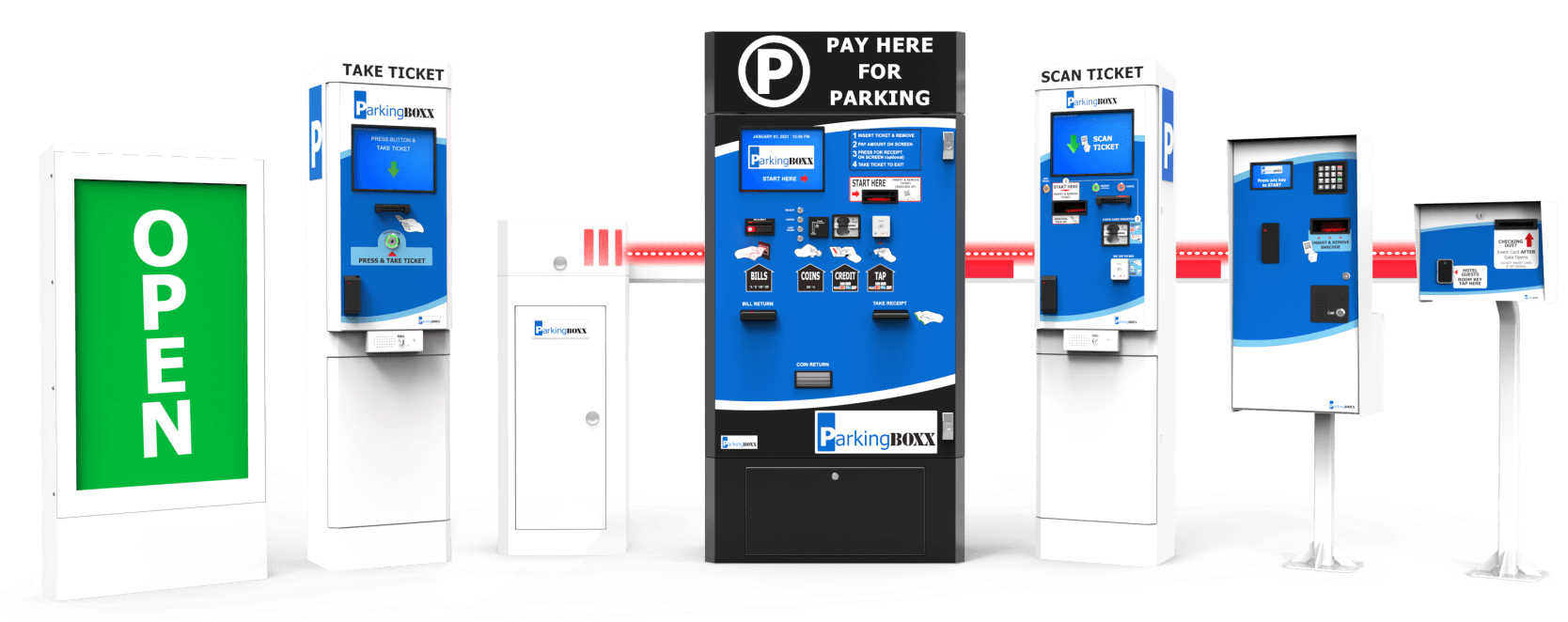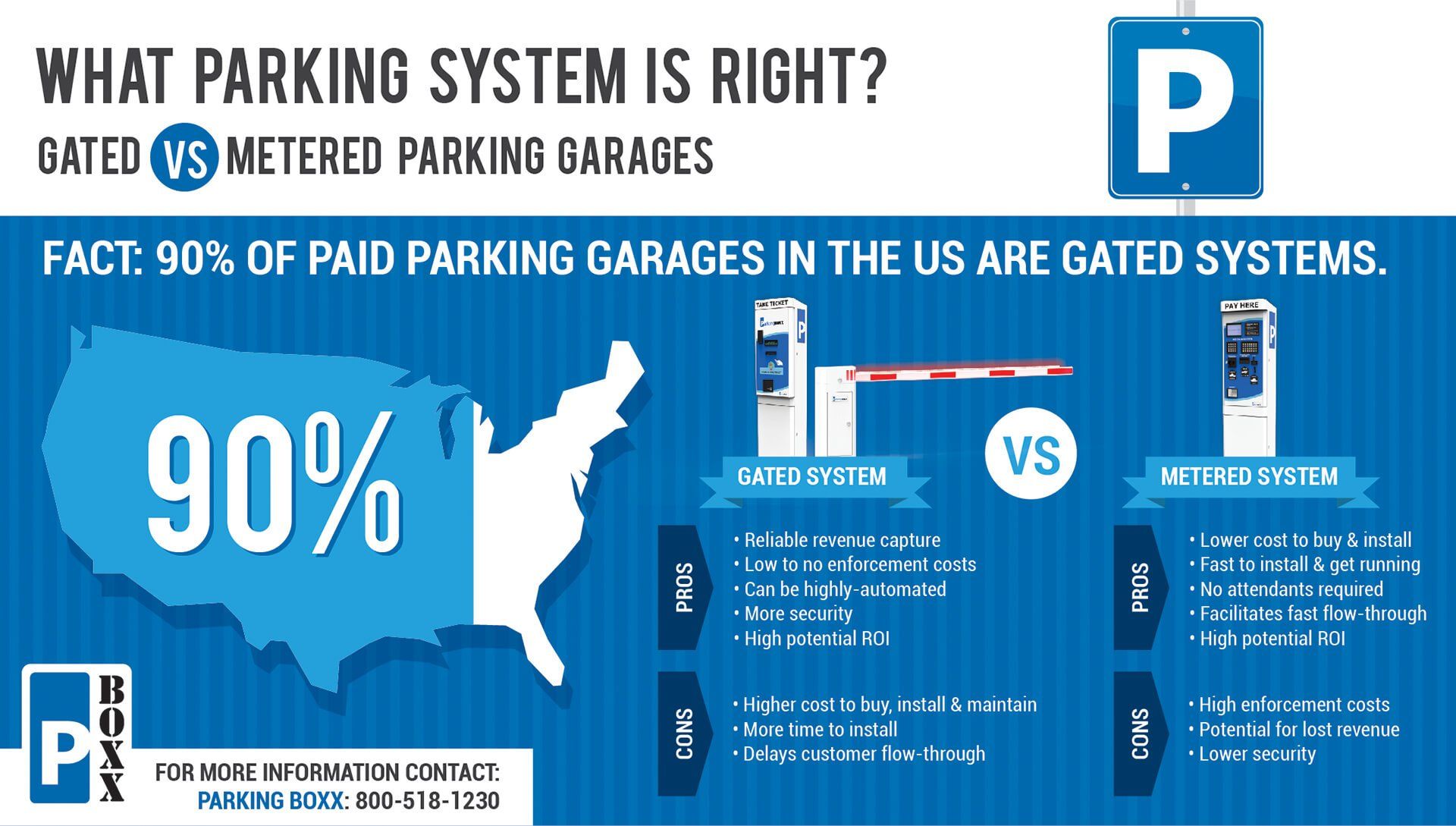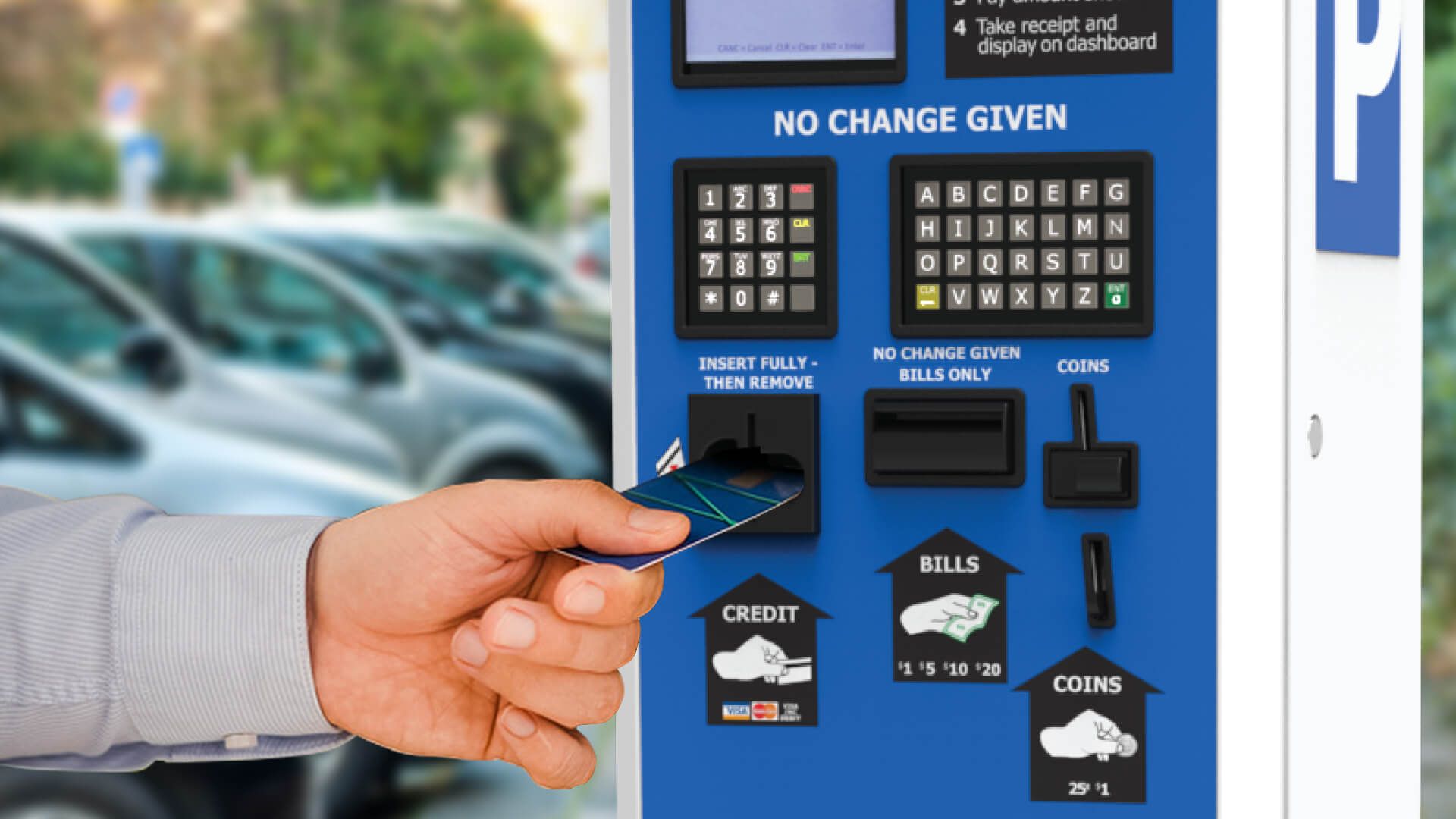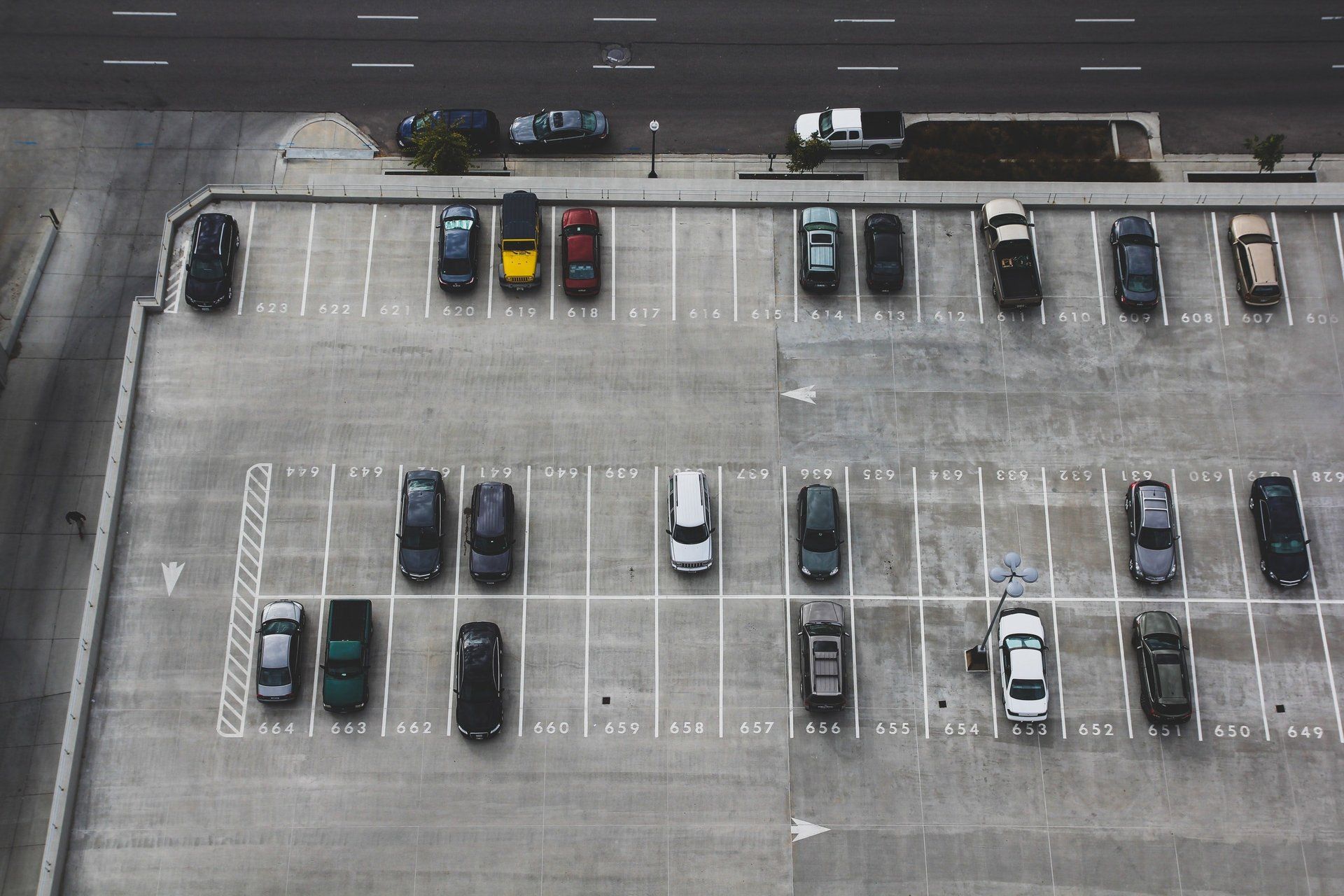
What are the different types of Parking Systems?
When evaluating the type of parking systems, there are many considerations to selecting your optimal parking system layout, features, and budget. One of the most common starting points is determining who uses the parking lot and then deciding if that is that the ideal potential use. For example, some parking lots are used exclusively by monthly Parkers or employees. Other parking lots are exclusively customers who pay for the time they are parked in the log. Many parking lots offer a combination of both options.
Next, we will look at methods of parking control, how Parkers are able to make payment and optional features to enhance your parking operations. Before we get into the details of each topic, here is a high-level checklist:
USE:
___ Monthly Parkers/Employees
___ Transient/Paying Customers
CONTROL:
___ Barrier Gates
___ Garage Doors
___ Patrolling the lot with ticketing/towing
PAYMENT: How will your Parkers (customers) to be able to pay:
___ At an unattended drive-up kiosk at the Exit Lane way
___ At an unattended walk-up kiosk to pay before exiting
___ On-line via their cell phone (no app download required)
___ An attendant (live-person)
OPTIONS: Do you need:
___ Printed Validation Coupons to offer discounts (low tech & low cost)
___ Handheld Electronic Validation (good for high volume & high tech)
___ Web Validation (manually enter ticket via any computer; low volume)
___ Parking Reservations (allow people to purchase parking in advance)
___ License Plate Recognition (LPR or ALPR)
___ Video Cameras
___ Intercoms (with voice only or voice and video)
BUDGET: In addition to cost also look at a parking ROI calculator.
___ $500 (a parking app)
___ Under $5K (smart parking meter)
___ $20K (flat rate gated - regardless of amount of time in lot)
___ $30K plus (full featured gated - all the options)
Parking System Control
Different types of parking systems have different methods of control. There may be control over or a barrier to access to the parking lot or garage via barrier gates, garage doors, tiger teeth or some combination of these items. Also there is the control mechanism for how that barrier opens. Examples include: press a button & take a barcode parking system, present RFID parking system or hotel guest card, press a Call for Assistance button.
If there is no barrier mechanism to control access at a pay on exit parking system, then the parking area would need to be monitored for parking violations.
Parking System Payment Options
For gated parking systems, payment may be made via unattended kiosks (self pay parking systems) in the exit lane or at unattended walk-up kiosks on the property. Payment may be accepted via Point of Sale (POS) system.
Alternatively there may be no barriers to access and any vehicle driver may enter the lot and pay to park. Payment may occur at an unattended kiosk, via an app or by paying a person who collects payment for vehicles to park.
For a more detailed comparison of gated vs. metered parking, please read in more details below.

To gate or not to gate parking systems is often the question.
When procuring a
parking solution , how can you know whether you need a gated parking system?
It isn’t necessarily about the scope of your parking operation. Even owners of large parking facilities, including multilevel garages, sometimes choose an ungated, metered commercial parking system. And for good reasons, as we’ll discuss.
In an assessment on behalf of the City of Miami Beach, Walker Parking Consultants performed an “Analysis of Gated v. Metered Enforcement” methods, in 2015. The assessment provides solid insight into when gated makes sense, and when a metered parking system may be appropriate.
According to Walker, 90% of paid parking garages in the US have barrier gates (p.1). While both metered and gated systems have advantages and disadvantages, gated systems allow for reliable revenue capture with nil enforcement costs. At the same time, metered systems are an ideal solution for street parking and present certain financial advantages.
In this article, we look in more detail at the pros and cons of gated smart parking systems versus metered systems, with a focus on costs and revenues.
According to the International Parking Institute survey, demand for greater parking revenue is one of the top 10 trends in parking today (p. 50). This comes as no surprise. For private and public parking facility owners, parking revenue must justify the use of resources.
Ga ted parking systems, by design, garner 100% of revenue. Parking customers must pay their ticket to exit the parking facilit y. This feature makes it easier to estimate revenues for gated parking systems.
In contrast, there are several factors that must be considered to estimate revenues from a metered parking system.
Revenue for metered parking systems depends, in part, on payment compliance rates. Where enforcement is vigilant, compliance rates are higher, but so are costs.
The City of Miami Beach asked Walker Parking Consultants to evaluate the impact of parking citations, or parking tickets, on revenue in a metered system. Walker’s analysis shows that citations can generate additional revenue to offset the costs of enforcement, but several factors must be considered. The revenue from citations varies depending on the:
- Citation capture rate (how many infractions lead to tickets)
- Collection rate (how many tickets are paid in full)
- The amount of the fines levied/ the average parking ticket fee
There is yet another unique calculation involved in metered parking system revenues. Parking customers sometimes overpay at a meter, to avoid a possible citation. In the case of Miami Beach, Walker estimated that a conservative 3% of additional revenues could be anticipated from overpayment at meters (p.11).
Overpayment at meters is less likely with a mobile payment option, like our P-123. Using P-123, customers can extend their time remotely. This reduces overpayment revenues, but increases customer satisfaction.
It should be noted that overpayment occurs with gated parking systems as well. When customers pay by the hour, their fee is rounded up to the nearest hour. In a pay-by-the-hour parking lot, the rate for a 70-minute session is the same as the rate for a full two hours. (Walker, p.18)
According to parking consultants, Kimley-Horn and Associates, there is a revenue advantage to choosing a parking system with the capacity to self-report when full. Revenue losses can be averted if the machines are never allowed to remain full. (p. 13)
Kimley-Horn also points out the importance of built-in accountability. “Since revenue is tracked and all access to the revenue compartment and coin vault can be recorded and audited, “leakage” is greatly reduced” (p. 13). This is especially true when access is controlled electronically and fully auditable.
Parking systems can be configured to issue email or text alerts when bill or coin areas are full, low, or to flag a completed collection. Some parking meters have individual access codes for collectors. Meter collectors must enter their code to log in and run audit reports before collecting cash. Failure to log in triggers an alarm and email or text alerts to the parking system management.
Kimley-Horn report that “vendors’ back-end meter management and revenue tracking software vary in capability. In fact, this aspect of a manufacturer’s product line – i.e., the back-end software, has recently become a significant differentiator among vendors” (p. 13).
Having parking software that offers a high degree of accuracy and timely revenue data, plus advanced integration, ensure that many business goals may be achieved.


- Is appropriate for smaller lots or areas that have low parking charges, and may not be able to support the higher investment required from gated systems;
- Requires a lower upfront capital investment;
- Is a simple solution, with few components;
- Can be installed quickly, with little to no civil work;
- Facilitate fast exit for high volumes of traffic in and out of the garage, without queuing.
- While metered parking systems require higher ongoing enforcement costs, for some owners, these costs are already committed and can’t be reduced.






